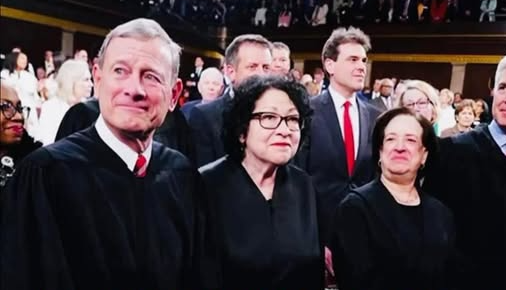This week, the United States Supreme Court handed former President Donald Trump a major legal victory, approving his controversial plan for extensive federal workforce reductions. The decision opens the door for one of the most ambitious government downsizing efforts in modern U.S. history — a plan that could reshape federal agencies, redefine civil service, and affect tens of thousands of public employees.
In an unsigned order released Tuesday, the Court lifted an injunction previously issued by U.S. District Judge Susan Illston, a Clinton appointee in Northern California. Judge Illston had blocked Trump’s February 13 executive order, citing concerns about its legality and possible constitutional overreach. The order, described by Trump as a “necessary restructuring of a bloated federal bureaucracy,” calls for broad cuts across multiple departments, consolidation of overlapping programs, and stricter performance-based evaluations for government employees.
The justices unanimously ruled that Illston’s injunction was based on “speculative grounds,” noting that detailed agency-specific plans had not yet been submitted when the lower court intervened. “Given that the Government is likely to prevail on its assertion that the Executive Order and Memorandum are lawful — and considering the other factors relevant to granting a stay are met — we approve the application,” the Court wrote. This gives Trump’s team full legal authority to begin implementing what insiders describe as “a fundamental realignment of federal governance.”
Administration officials celebrated the ruling as a green light for long-planned reforms. White House Chief of Staff Mark Meadows said the goal is to “modernize, streamline, and refocus” the federal government toward efficiency and accountability. “For too long, the bureaucracy has operated like a self-preserving entity,” he said. “President Trump believes government should serve the people, not itself. This ruling finally allows us to deliver on that promise.”
Opponents warn the move could undermine essential services and weaken the government’s ability to manage areas such as environmental policy, healthcare, and defense logistics. The American Federation of Government Employees, the largest federal workers’ union, called the decision “a dangerous precedent that politicizes public service and puts tens of thousands of middle-class families at risk,” and pledged to continue challenging it through legal and legislative channels.
Analysts note the plan’s implications extend beyond immediate layoffs. The order gives agency heads broader authority to dismiss employees deemed “underperforming,” reduce redundancy among departments, and centralize oversight under the Office of Management and Budget. It also allows the elimination of certain independent commissions, citing “fragmentation and entrenched inefficiency” that impede government responsiveness.
The administration stresses the cuts are not arbitrary. Preliminary reports indicate the Departments of Education, Energy, Commerce, and Interior could face major reorganizations. Trump framed the plan as part of his effort to “drain the swamp.” In a statement after the Court ruling, he said, “The American taxpayer has carried the burden of an overgrown government for far too long. Today marks the beginning of restoring sanity, accountability, and fairness to Washington.”
Critics argue the true purpose is consolidating executive power and removing civil servants who resist partisan directives. “This isn’t about efficiency,” said former Office of Personnel Management Director Katherine Archuleta. “What the administration calls reform is actually about replacing career experts with political appointees.” Legal scholars also question how far executive authority can extend under this precedent, noting that the Court’s decision reinforces the president’s ability to restructure federal employment without congressional approval — a rarely exercised power at this scale.
For federal workers, the immediate consequences are significant. Estimates from the Congressional Budget Office suggest that up to 50,000 positions could be affected in the first phase, with deeper cuts possible next year. Agencies are already preparing voluntary separation offers and early retirement packages. “Morale is already plummeting,” said one Environmental Protection Agency employee who spoke anonymously. “People don’t know if they’ll still have jobs by Christmas.”
Some fiscal conservatives argue the reductions are long overdue, pointing to decades of reports on duplication, waste, and bureaucratic inefficiency. The Heritage Foundation praised the Court’s ruling as “a decisive step toward restoring fiscal discipline and executive efficiency.” Proponents argue the cuts could save billions and free funds for infrastructure, defense, and tax relief.
However, the broader effects could be felt for years. Restructuring may slow public service recruitment and delay policy implementation as experienced personnel leave. State and local governments could see reduced federal grants and support. Economists warn that widespread job cuts in Washington could temporarily impact consumer confidence and labor markets, particularly in Virginia and Maryland.
The administration is moving forward. An interagency task force, led by Deputy Chief of Staff Dan Scavino, will coordinate the downsizing process, with reports on specific personnel and budget adjustments expected within sixty days. Trump, speaking from Mar-a-Lago, called the Supreme Court’s ruling “a victory for the American worker who pays the bills” and promised the cuts would “remove waste, not talent.”
Meanwhile, Democratic leaders condemned the decision as “reckless and authoritarian.” Senate Majority Leader Chuck Schumer called it “a political purge disguised as reform.” The White House countered that all departmental restructuring plans would be legally reviewed to ensure compliance with federal labor laws.
As debates continue, it is clear this ruling is just the beginning of a transformation that could reshape how government functions for decades. Whether the plan achieves the efficiency Trump promises or triggers the chaos critics fear remains uncertain, but the Supreme Court has given the former president extraordinary authority — and Washington will not operate the same way again.
